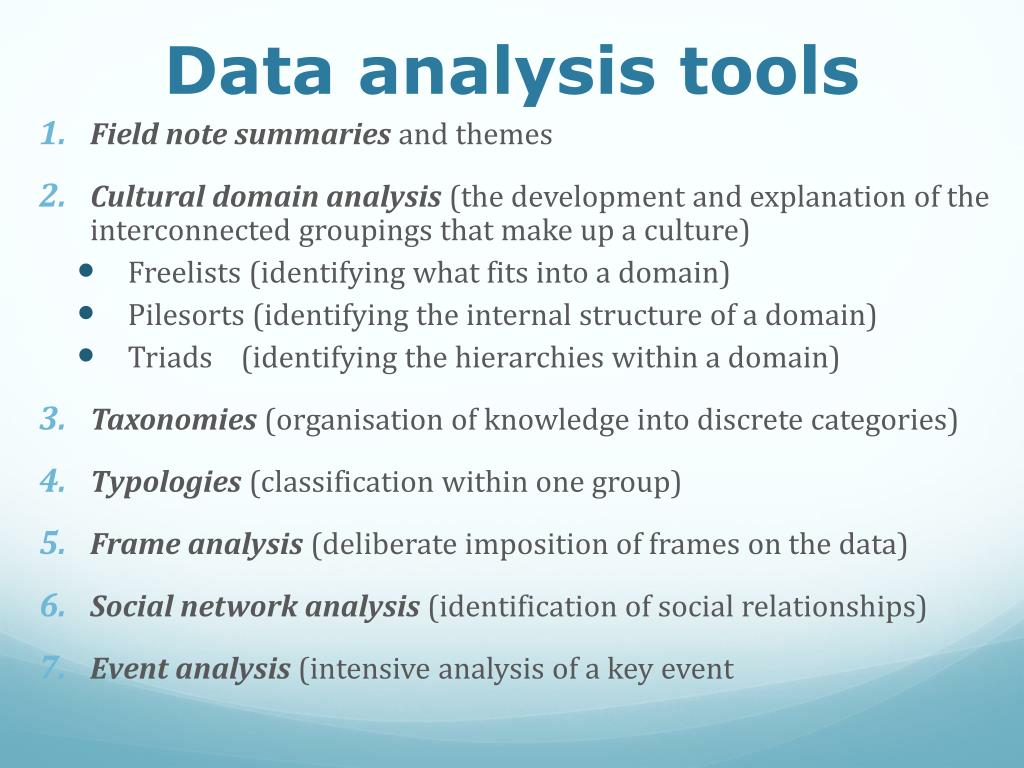
Tool Collectionīrowse the collection of the most commonly used qualitative and quantitative analysis tools here. For example, field notes, interviews, video, audio, open-ended survey questions all provide qualitative data for analysis. Qualitative analysis uses descriptive data to understand processes (e.g., how students learn in a group), develop insights into the form of sensitizing concepts, and present the view of the world from the point of view of the participants (e.g., the teachers, students and others related to the classroom). For example, surveys, questionnaires, and evaluations that include multiple choice items and ratings (e.g., Likert scale) provide quantitative data for analysis.

Quantitative data are numerical, ordinal, nominal. Quantitative analysis uses numerical data to identify statistical relationships between variables.

Quantitative and Qualitative methods both use deductive, inductive, and adductive processes to understand a process or phenomenon, just in different ways using different data. The Analytical Tool collection includes examples in these areas, as well as special types of analytical tool used for data specific applications and data visualizations. Some studies focus on qualitative data, others on quantitative data, and many on both (mixed-methods studies) examples of these can be found in a NAGT-GER Division hosted collection of presentations on Methods for Conducting GER.

How the data is analyzed depends on the goals of the project and the type of data collected. It enables them to report results and make interpretations. Data analysis tools help researchers make sense of the data collected.


 0 kommentar(er)
0 kommentar(er)
